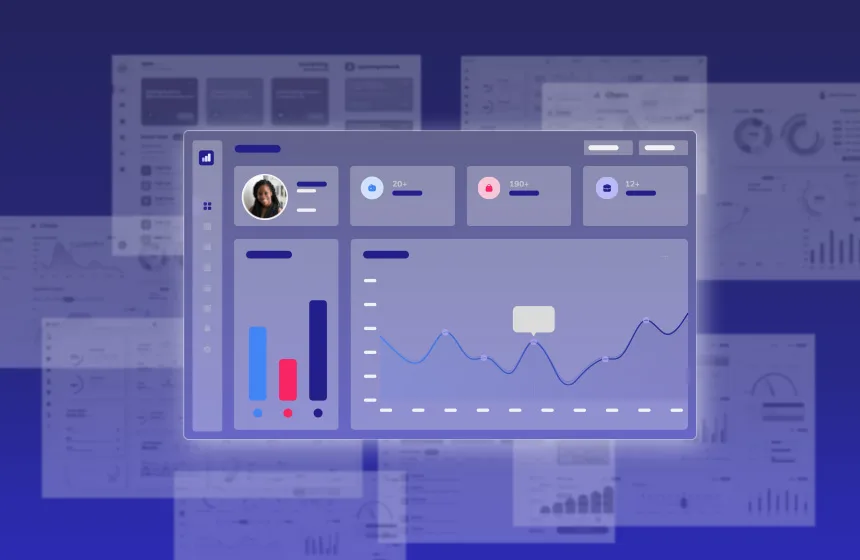Accelerate deals and increase win rates with the leading enterprise AI demo platform.
The Art of Failing Forward: Demo Lessons Learned

October 8, 2025
Table of Contents
Every Solutions Engineer (SE) has a demo horror story. The question isn’t whether you’ll face a disaster. It’s how you’ll handle it when the product crashes, your carefully prepared presentation gets rejected mid-pitch, or technical failures threaten to derail your biggest opportunity.
The stakes couldn’t be higher. Research shows that 81% of salespeople have lost a deal due to a bad demo. These aren’t just minor setbacks, they’re pipeline killers that cost companies millions in lost revenue and wasted sales cycles. A single demo failure can undo months of relationship building and positioning.
That’s precisely why the best SEs architect their entire approach around prevention and recovery. They use reliable demo software, maintain backup plans, and develop the composure to pivot gracefully under pressure. You can’t eliminate every risk, but you can dramatically reduce your vulnerability.
At Reprise’s Demos Reimagined ’25 conference, a panel of seasoned SEs got refreshingly honest about their biggest demo fails. What emerged was an important lesson in resilience, adaptability, and the deeply human skills that separate good SEs from great ones.
The Discovery Gap: When Preparation Means Actually Listening
One of the most painful lessons in demo work is learning that your brilliant creative approach isn’t what the prospect wanted. When buyers provide specific criteria or questionnaires, there’s often a reason. They may have internal stakeholders to satisfy, compliance requirements to meet, or simply a preference for straightforward answers over storytelling.
The instinct to “elevate” a boring questionnaire into an engaging narrative comes from a good place — SEs want to provide value and demonstrate strategic thinking. But when a prospect stops you mid-demo to say “this isn’t what I asked for,” you’ve broken trust before you’ve built it.
The fix isn’t about being less creative. It’s about doing better discovery upfront. Ask whether they’re open to a different format. Understand who else will review the materials. When in doubt, deliver exactly what was requested first, then offer additional perspectives as a follow-up.
The Technical Failure Playbook: Always Have a Backup
The difference between disaster and minor inconvenience often comes down to preparation and composure.
Live production environments introduce countless failure points: authentication issues, backend dependencies, data problems, internet connectivity. The most battle-tested SEs avoid these risks entirely by using dedicated demo environments designed for reliability. When your primary demo tool is built to work offline and handle the chaos of real-world selling, you’re already ahead. Layer in backup options (click-through presentations or secondary devices for in-person demos) and you can pivot seamlessly through any scenario without revealing technical issues to prospects evaluating product reliability.
But the real skill isn’t the backup, it’s the pivot. When you can’t show something immediately, lean into discovery. Ask why that specific feature matters to them. What problem are they trying to solve? This approach accomplishes three things: it buys time to troubleshoot, it deepens qualification, and it demonstrates that you’re more interested in their needs than in your demo script.
One particularly effective follow-up technique: record a short, specific video after the call addressing the feature or question you couldn’t demonstrate live. It shows accountability and keeps momentum going.
The Composure Principle: Your Audience Takes Cues From You
Here’s a psychological truth every SE should internalize: prospects mirror your emotional state. If you project panic when something goes wrong, they feel uncomfortable and can’t focus on your message. If you stay calm and adapt, they trust that you’re capable of handling complexity.
This applies whether your browser crashes during a webinar, your props fail during an in-person demo, or your Wi-Fi cuts out at a conference. The technical issue is rarely what kills the deal, but rather the visible anxiety and loss of control.
The most effective SEs develop what crisis communications professionals call “confident composure.” They acknowledge issues matter-of-factly without dramatic language. Instead of “Oh no, something’s broken!” they ask “Can you still see my screen?” The phrasing signals that they’re troubleshooting, not panicking.
This skill becomes especially critical when handling unexpected questions or pivots from prospects. Having three core “anchor points” you can always return to (your champion’s key concern, your company’s differentiated value, and the prospect’s stated problem) gives you solid ground when conversations veer off script.
Reframing Anxiety: From Performance to Conversation
Many SEs, particularly those early in their careers, struggle with demo anxiety rooted in imposter syndrome. When you’re presenting to executives with decades more experience, or entering industries you’re learning about in real time, the pressure to appear like an expert can be paralyzing.
The breakthrough insight from experienced SEs: stop thinking about demos as performances and start treating them as conversations between people trying to solve problems. You don’t need to know everything. You need to know enough about the product to have a productive discussion, and enough about their needs to ask good questions.
This mental reframe has practical applications. When something in the product doesn’t work during a demo, you can say “this is my demo instance acting up” with a casual tone, make a light joke, and keep the conversation moving. Prospects aren’t expecting perfection, they’re evaluating whether you’re someone they want to work with for months or years.
Physical techniques matter too. Keep water nearby to manage anxiety symptoms. Test everything 10 minutes before calls. Maintain detailed prep documents for each customer that you can reference when conversations pivot unexpectedly.
The AI Advantage: Personalization and Quality Assurance
Forward-thinking SEs are using AI tools in two particularly effective ways:
Industry language adaptation. When demoing to different verticals, speaking their specific terminology makes solutions feel native rather than generic. Using AI to quickly learn what a “business user” is called in media (studio manager) versus manufacturing (plant supervisor) versus healthcare (care coordinator) creates immediate credibility. This goes beyond using the right job titles — it’s about understanding their workflow language, pain point terminology, and success metrics.
Demo quality assurance. Some teams are uploading screenshots of their demo environments to AI tools like NotebookLM and asking it to identify inconsistencies, confusing data, or elements that would raise questions. The AI can spot issues that human eyes miss after multiple reviews, like financial figures that don’t correlate properly, or data that would confuse specific personas. This proactive approach catches problems before prospects do.
Essential Preparation: The Non-Negotiable Checklist
The collective wisdom from experienced SEs converges on these preparation essentials:
Invest in demo infrastructure that works independently from your production environment and doesn’t require internet connectivity. Keep a click-through backup presentation ready for the rare total failure scenario.
Test your complete flow 10 minutes before every demo. Not an hour before — 10 minutes. Refresh all tabs, click through your path, verify your updates are installed.
For high-stakes demos, have redundancy. Multiple browsers open, secondary devices ready, backup internet connections via mobile hotspot.
Maintain detailed customer prep documents with everything you know about them, questions you have, and tabs pre-arranged to minimize navigation during the demo.
Update all your tools. Browsers, meeting software, screen sharing tools are all boring but critical.
When All Else Fails: Close the Laptop
Perhaps the most liberating realization for struggling SEs: sometimes the best response to technical disaster is abandoning the demo entirely. Close the laptop. Pull out a whiteboard. Have a conversation about their problems and how you solve them, using diagrams and discussion rather than product screens.
This pivot signals confidence in your solution beyond the interface. It also reveals whether you understand the value you deliver or merely know how to click through a demo script.
The Bottom Line
Demo disasters aren’t career-enders. They’re opportunities to demonstrate the qualities prospects actually care about: composure under pressure, creative problem-solving, and genuine focus on their needs over your pitch.
The SEs who thrive long-term aren’t the ones with perfect technical execution. They’re the ones who show up as real people having real conversations, who adapt gracefully to chaos, and who remember that buyers are ultimately trying to solve problems, not evaluate demo performances.
Every failure contains a lesson. The question is whether you’ll learn it alone through painful repetition, or accelerate your growth by studying how others have failed forward before you.
Want to watch the full panel discussion from Demos Reimagined? You can access the recording here.






